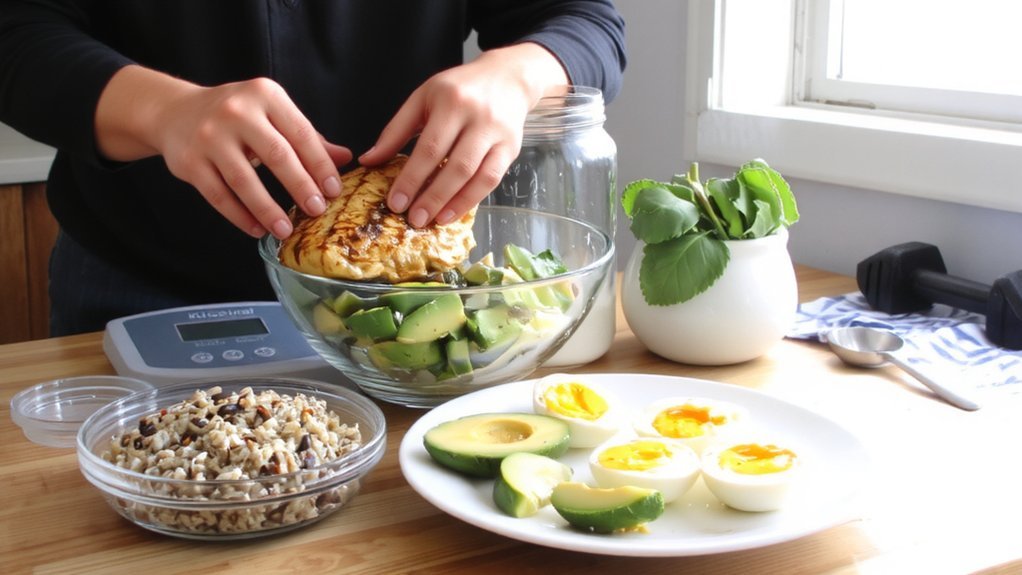You can make fast, consistent gains early on if you focus on big compound lifts, progressive overload, and enough protein. You’ll get better results by training major muscle groups 2–3 times weekly and tracking load and volume. Want a simple, practical plan to follow next?
Understanding Newbie Gains and What to Expect

Why do beginners see fast progress?
When you start resistance training, your nervous system learns movements quickly, improving coordination and strength before muscle size jumps.
Early increases in muscle protein synthesis and heightened sensitivity to stimulus let you gain mass faster than later on.
Hormonal responses, including insulin, growth factors, and testosterone, also spike with new training, aiding recovery and growth.
You’ll recover quicker from workouts initially, so adaptations stack rapidly.
Realistic expectations matter: gains are noticeable at first, then slow as you approach genetic potential and require smarter strategies.
Track progress with photos, strength numbers, and measurements rather than scale weight alone.
Consistent effort, adequate nutrition, and sleep let you capitalize on this window of accelerated adaptation.
Be patient and persistent. Always learn.
Designing Your Beginner Workout: Frequency, Volume, and Exercises

When you design a beginner program, balance frequency (how often you train each muscle), weekly volume (total sets per muscle), and exercise choice around simple, compound movements so you get consistent stimulus without overcomplicating things.
You’ll train major muscle groups two to three times weekly using full-body or upper/lower splits. Prioritize compound lifts—squats, deadlifts, presses, rows—then add a couple of accessory moves for weak points.
Keep weekly set totals moderate and distribute them across sessions to avoid excessive fatigue in one workout. Track progress and adjust volume if recovery lags or gains stall.
Learn movement patterns and build technique before adding complexity. This approach gives steady stimulus, improves skill, and reduces injury risk as you progress. Stick with it and be patient consistently throughout.
Choosing the Right Loads and Rep Ranges for Hypertrophy

You’ve built a simple, consistent program—now pick loads and rep ranges that stimulate growth while letting you maintain good form.
Aim primarily for moderate loads that let you complete 6 to 12 reps with good technique; that range balances mechanical tension and metabolic stress.
Use 3 to 5 sets per exercise, adjusting volume across the week rather than cramming it into one session.
Choose weights that feel challenging on the last 2 to 3 reps without breaking form; stop a rep or two short of failure on compound lifts and push closer to failure on isolated movements. Progress by adding weight, reps, or sets and vary phases (heavier 4 to 6, lighter 10 to 15) every 6 to 12 weeks to keep adaptations coming.
Nutrition, Protein, and Calorie Strategies for Muscle Growth

Although nutrition can feel complex, getting calories and protein right is the single biggest modifiable factor for building muscle.
Aim for a modest calorie surplus of about 250 to 500 kcal daily to fuel growth without excessive fat. Prioritize protein: target 1.6 to 2.2 g per kilogram of bodyweight, spread evenly across meals to support muscle protein synthesis. Choose high-quality sources: lean meats, dairy, eggs, legumes, and protein powders when needed.
Balance carbs and fats to sustain workouts and hormone health; aim for fats around 20 to 30 percent of calories. Track intake for several weeks and adjust based on weight and strength trends. Stay hydrated and include micronutrient-rich whole foods; supplements are optional, not essential.
Be consistent; small changes compound into meaningful gains.
Recovery, Progression, and Overcoming Common Plateaus

Because growth happens between workouts, prioritize sleep, proper nutrition, and planned rest so your body can adapt and get stronger.
Manage training volume and intensity: increase load or reps gradually, sticking to progressive overload to force adaptation.
Track workouts and recovery metrics—sleep, soreness, energy—and adjust sessions when performance drops.
Use deload weeks every 4–8 weeks to clear fatigue and reduce injury risk.
If you hit a plateau, change a variable: tempo, rep range, exercise selection, or rest periods, rather than overloading volume.
Consider mobility work and targeted accessory exercises to address weak links.
Be patient: small, consistent increases win.
If progress stalls for months, re-evaluate nutrition, sleep, stress, and program structure with a coach or experienced lifter.
Don’t ignore pain; seek professional help promptly.
Conclusion
You’ll make fast beginner gains if you train major muscle groups two to three times weekly with compound lifts (squats, deadlifts, presses, rows), use three to five sets of six to twelve reps, and steadily increase load or reps; prioritize technique, spread moderate volume, and add accessory work. Eat a 250–500 kcal surplus with 1.6–2.2 g/kg protein, sleep well, deload occasionally, and tweak variables when progress stalls to keep growing over the long term consistently.